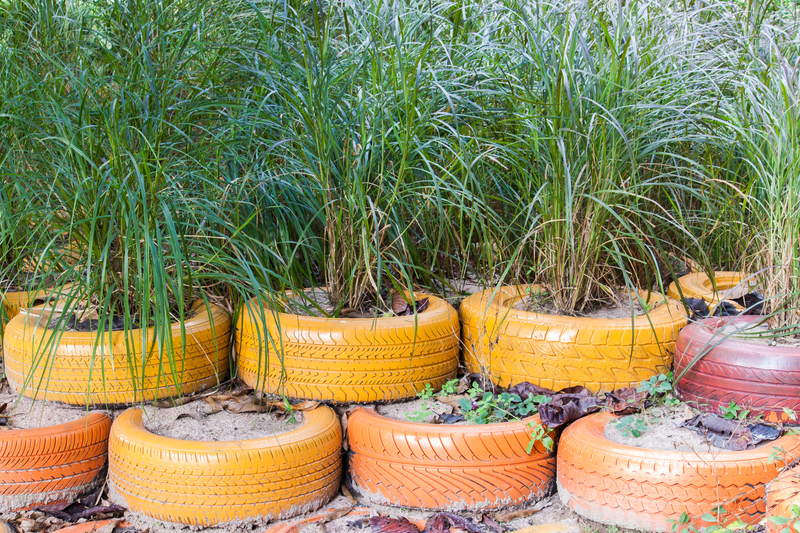How to Give Discarded Objects a Second Life Through Upcycling
In today's world of excessive consumerism and environmental concerns, upcycling discarded objects is more than just a trend--it's a crucial step toward a more sustainable future. Instead of letting items go to waste, you can transform them into something new, useful, and even beautiful. This guide will dive into creative ways to breathe fresh life into old materials and possessions while helping the planet and enriching your own creativity.
Understanding Upcycling and Its Importance
Before diving into the methods and project ideas, it's essential to grasp the concept of upcycling and why it matters.
What Is Upcycling?
Upcycling is the creative process of repurposing discarded or unwanted items and materials, giving them a new function or enhanced value. Unlike recycling, where materials are broken down and reprocessed, upcycling focuses on reusing objects in their existing form and upgrading them to serve a new purpose.
- Reduces Landfill Waste: By diverting items from landfill, you minimize environmental damage.
- Conserves Resources: Upcycling saves the energy and resources required to produce new products.
- Fosters Creativity: The challenge of upcycling inspires imagination and ingenuity.
- Affordability: Giving things a second life can be budget-friendly or even free.
Why Should You Upcycle?
With the rise of eco-conscious living and the urgent need to combat climate change, more people are discovering the joys of giving discarded objects a second life through upcycling. Not only do you reduce waste, but you also add unique character to your home or wardrobe while developing valuable skills.

Getting Started: Essential Steps in Upcycling
Step 1: Identify Upcyclable Items
Start by looking around your home or local thrift stores. Common candidates for creative upcycling include:
- Old furniture (tables, chairs, cabinets)
- Wooden crates and pallets
- Glass jars and bottles
- Worn-out clothing and textiles
- Electronic waste (circuit boards, components)
- Plastic containers
- Metals and tin cans
- Cardboard boxes
Step 2: Gather Basic Tools & Materials
You don't need to invest heavily to begin repurposing discarded items. Some basic supplies will help get you started, such as:
- Screwdrivers, pliers, and hammers
- Sandpaper or sanding block
- Paints, brushes, and sealant
- Hot glue gun and glue sticks
- Drill and screws
- Scissors, fabric, and thread (for textile projects)
- Protective gear (gloves, mask, eyewear)
Step 3: Find Your Inspiration
Sites like Pinterest, Instagram, home decor blogs, and upcycling communities are filled with inspiring ideas on how to upcycle waste objects creatively. Save ideas that resonate with your style and needs, and let your imagination run wild.
Popular Upcycling Projects: Creative Ways to Repurpose Discarded Objects
Upcycling Furniture: Before and After
Old furniture is perhaps the most rewarding upcycling opportunity. Here are some popular furniture transformations:
- Pallet Coffee Tables: Sand and stain wooden pallets, add wheels, and you have a trendy coffee table.
- Chair Swings: Revive an old wooden chair by reinforcing it and hanging it with ropes for a porch or garden swing.
- Cabinet Redesigned: Remove a cabinet door, paint it, and add shelves for a stylish bookcase.
Turning Glass Jars and Bottles Into Home Decor
Glass jars are easy to collect and come with endless possibilities:
- Candle Holders: Fill with sand or pebbles, place a tealight, and wrap with twine for rustic charm.
- Mini Indoor Gardens: Create terrariums by adding soil, stones, and small plants to glass jars.
- Vases or Storage: Paint bottles with chalk paint for colorful vases or use jars as stylish organizers in your bathroom or kitchen.
Repurposing Old Clothes and Fabrics
The textile industry generates massive waste. Upcycling clothes breathes new life into discarded fabrics and reduces your fashion footprint.
- Patchwork Quilts: Combine scraps of old T-shirts, jeans, or bedding to sew cozy, personalized quilts.
- Reusable Shopping Bags: Convert worn shirts or dresses into durable, eco-friendly totes.
- Rag Rugs: Braid strips of fabric into vibrant area rugs for the kitchen or bedroom.
Innovative Upcycling Using Electronics and E-Waste
Technology evolves, but e-waste often lingers. Here's how you can give e-waste a second life:
- Circuit Board Clocks: Mount an old motherboard or circuit board within a clock frame.
- Computer Part Lamp: Stack hard drives and keyboard parts to fashion an industrial-style lamp.
- CD Art: Old CDs can be cut, painted, or arranged as shimmering wall art.
How to Give Discarded Objects a Second Life: Step-by-Step Process
1. Choose the Right Object for Upcycling
Select an item that is sturdy enough for the project and not so damaged that it's unsafe or unusable. Clean it thoroughly before beginning your project.
2. Plan the Transformation
Create a rough sketch or vision board for your project. This step is crucial, as it outlines materials, colors, and steps needed. Consider how the repurposed object will blend with your home decor or lifestyle.
3. Prepare the Surface
Disassemble where necessary. Sand rough or sharp edges. For glass or plastic, clean with soap and water. For wood or metal, use sandpaper and a damp cloth.
4. Paint, Decorate, or Modify
Apply paint, varnish, or fabric as required. Add embellishments like stencils, decals, or hardware to enliven the object's appearance and function.
5. Assemble and Test
Put all pieces together. If your project has moving parts or weight-bearing functions (like shelves), test for stability and safety.
6. Enjoy and Share Your Creation!
Showcase your upcycled project in your home, give it as a gift, or even sell it online. Inspire friends and family to join the upcycling movement.
Tips for Successful Upcycling
- Start Small: Begin with easy projects before attempting complex redesigns.
- Embrace Imperfections: Upcycled items often have a charming, handmade appeal.
- Combine Materials: Mix wood, glass, metal, and fabric for unique results.
- Use Eco-Friendly Paints and Sealants: Choose non-toxic and water-based products.
- Learn from Mistakes: Every upcycling attempt (even failed ones) builds skill and inspiration.
Frequently Asked Questions About Upcycling Discarded Objects
What is the difference between recycling and upcycling?
Recycling breaks down objects into raw materials for manufacturing new items. Upcycling, in contrast, directly transforms old items into something new without breaking them down, often increasing their value.
Can anyone start upcycling, or do you need special skills?
Absolutely! While expert projects require experience, anyone can start with simple repurposing ideas--no advanced tools or special training needed.
Is upcycling expensive?
Not at all. Most upcycling projects use materials you already have or which can be found inexpensively at thrift stores or recycling centers.
How can I sell or donate my upcycled creations?
Try platforms like Etsy, eBay, Facebook Marketplace, or local craft fairs for selling. For donating, reach out to community centers, shelters, or upcycle-focused charities.
Benefits of Giving Objects a Second Life
- Environmental Impact: Reduces waste and carbon footprint.
- Personal Fulfillment: Nurtures creativity and skill development.
- Community Building: Shares inspiration and practical solutions within a community.
- Saves Money: Cuts costs on buying new items.
By upcycling unwanted items, you join a global movement to build a more sustainable, resourceful, and creative society. Each project, no matter how small, contributes to a healthier planet and a more joyful life.
Upcycling Ideas for Every Room
Living Room
- Convert wine crates into rustic bookshelves.
- Transform old suitcases into quirky side tables.
- Paint and reupholster worn chairs for a fresh look.
Kitchen
- Use glass jars for storing spices and dry foods.
- Turn a wooden ladder into a hanging pot rack.
- Repurpose tin cans as utensil holders or planters.
Bedroom
- Craft a headboard from salvaged doors or pallets.
- Make unique wall art from old picture frames and fabric scraps.
- Repurpose dresser drawers into under-bed storage boxes.
Bathroom
- Remodel glass bottles into soap dispensers.
- Use old ladders as towel racks.
- Craft a mirror frame out of recycled wood or driftwood.
Upcycling in the Garden
Gardens are ideal for creative upcycling. Discarded objects can become planters, seating, or even garden art.
- Turn tires into colorful outdoor planters.
- Use an old bathtub as a raised vegetable bed.
- Transform pallet wood into vertical herb gardens or compost bins.
- Fashion garden art from broken tools or ceramics.

Joining the Upcycling Community
One of the joys of upcycling is being part of a vibrant community of makers and environmental stewards. Share your projects, seek feedback, and collaborate with others through:
- Local maker spaces
- Online upcycling groups and forums
- Neighborhood swap meets
- Creative workshops and classes
Document your upcycling journey on social media and inspire others to give discarded objects a second life!
Conclusion: Every Object Deserves a Second Chance
In a throwaway world, upcycling stands as an act of hope and responsibility. By transforming discarded items into new treasures, you not only contribute to a more sustainable environment but also inject personality and meaning into your living space. With a little imagination, basic tools, and a can-do attitude, anyone can master upcycling and help build a better future--one item at a time.
Ready to start upcycling? Look around your home for objects waiting to be reborn and begin your journey to a more sustainable and creative lifestyle today.
